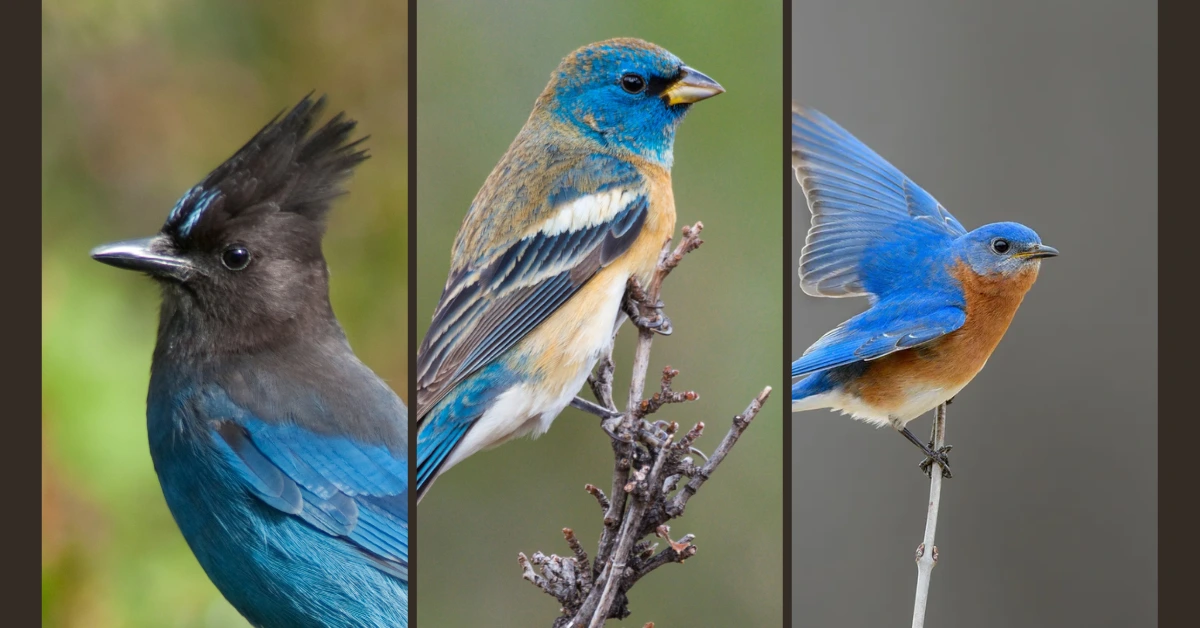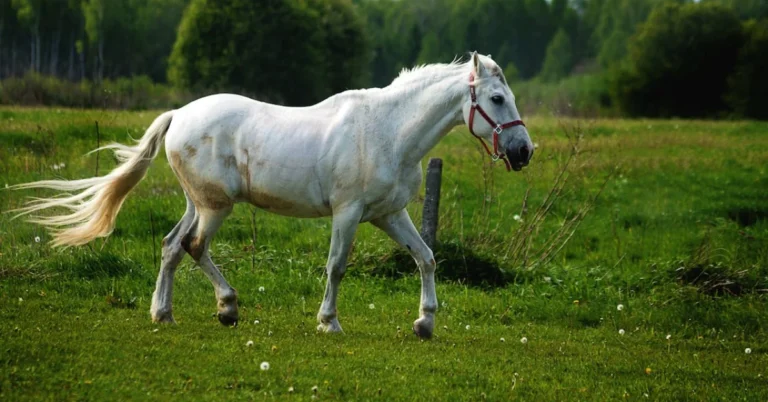With remarkable biodiversity spanning arid deserts to snow-capped sierras, Blue Birds in California provides a mosaic of habitats for over 600 avian species. Amongst the grebes, hawks, finches, and orioles that paint the Golden State’s skies, numerous blue feathered jewels shine bright.
Their vibrant cerulean, cobalt, and sapphire plumages contrast strikingly across ecological zones – glittering over wildflower meadows, filtering through oak woodlands, and illuminating pine forests. This article explores 12 of California’s most dazzling types of blue birds showcasing various sizes, ecologies, and behaviors.
We survey beloved backyard guests alongside elusive high-altitude specialists. And we discover some surprisingly inventive adaptations – a tiny hummingbird that braves the cold, an acrobatic mocker that caches seeds underground. From migratory guests adorning summits and valleys to year-round residents, these charismatic species contribute greatly to California’s rich avian heritage.
Year-Round Azure Denizens
Several vibrant blue bird species grace California across the seasons as year-round residents. They add a welcome pop of color to winter days and lively songs to spring breeding rituals. Learn about what blue birds eat to enhance your appreciation of these delightful avian visitors. Let’s explore some stand-out local favorites:
1. Western & Mountain Bluebird

Two iconic bluebirds share the state, the Western Bluebird gracing coastal areas and the Mountain Bluebird adorning central to eastern mountain highlands. Discover more about their habitats, behaviors, and the unique beauty of their blue bird eggs. Abundant in appropriate habitats, male Western Bluebirds glow in brilliant azure while Mountain Bluebird males dazzle in saturated sky blue. Both females show more muted blue-gray tones on their wings. These cavity nesters readily inhabit nest boxes.
2. California Scrub-Jay

With its blue-gray back contrasting a gray breast and striking white eyebrows, the familiar “Camp Robber” Scrub Jay adds panache to parks and backyards statewide. Highly intelligent, vocal, and often comical, they easily adapt to human environments. This beneficiary of oak woodland habitat loss spreads sunflower seeds and acorns around, benefiting ecosystems.
3. Steller’s Jay

Cresting large mountain conifers, the Steller’s Jay announces its presence with loud, raspy calls. Its deep azure wings, tail, and crest contrast with a black throat and face. Sometimes considered bullies at bird feeders, their eye-catching plumage still dazzles. Found across California’s mountains and northern forests, these clever mimics spread tree seeds, helping regeneration.
4. Anna & Black-Chinned Hummingbird
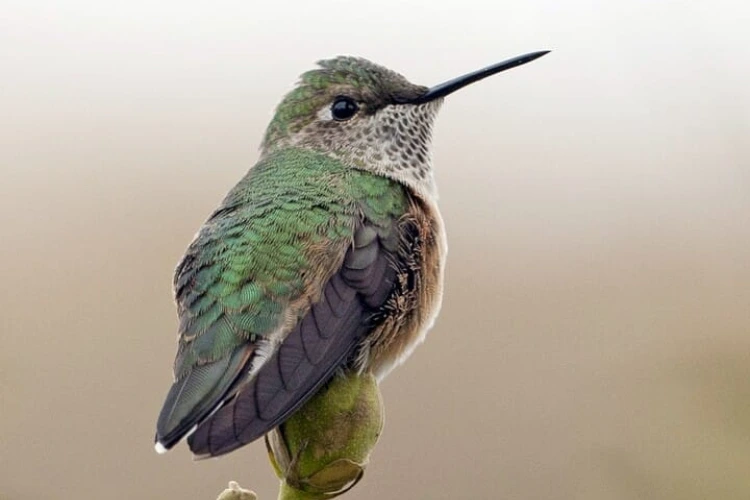
Tiny but bursting with energy, these resident feisty hummingbirds display incredible flying skills, from hovering to rapid dives. Males sport flashy purple-hued throats – Anna’s flaunts a spectacular magenta gorget while the Black-Chinned shows off an elegant sheen. Catch them chasing off intruders with rising shrieks!
Blue Migrants Adding Seasonal Sparkle
Many avian beauties make epic migrations across continents and latitudes to spend California’s mild seasons. Two species bring brilliant blue hues:
1. Western Tanager
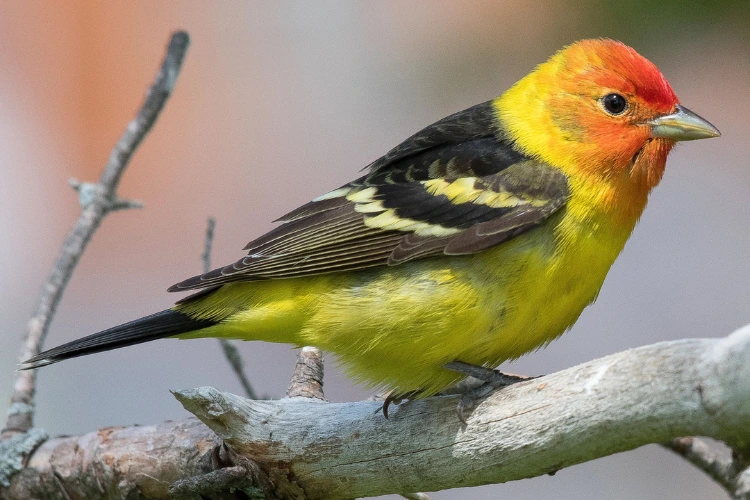
As a bold contrast to its bright yellow underparts, the male Western Tanager boasts a striking red face and electric blue back and wings, resembling a miniature work of art in motion, much like hummingbirds fly. Though females are more subtly elegant in gray and green, the species adds incredible color when breeding in open coniferous California woods. After raising young here, they migrate to the subtropics for winter.
2. Lazuli Bunting
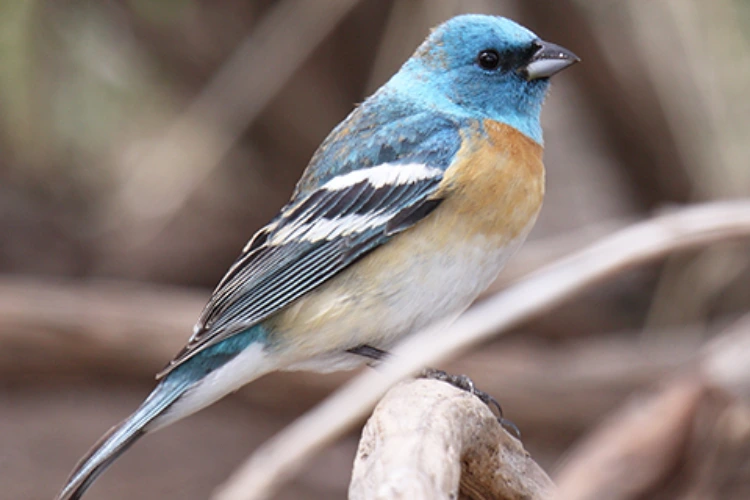
A real seasonal celebrant, male Lazuli Buntings completely transform from winter brown to brilliant blue come spring – regaining vibrant plumage on heads, backs, and tails! Their arrival in chaparral and woodland habitats coincides with flowering displays. Females wear more demure white wing bars but share melodic voices with males to seduce mates. Come fall, they migrate out of state.
California’s Bluetiful Birds of Prey
1. Belted Kingfisher
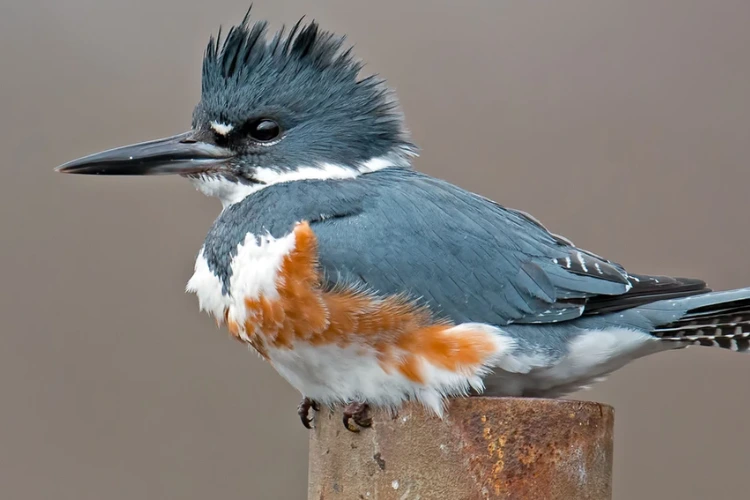
Perched streamside on branches with dagger beaks aimed at the water, Belted Kingfishers survey for unsuspecting fish. When diving headfirst into currents, their slate-blue feathers and signature female chest bands flash. Males also sport a second blue band above the tail. Nesting in steep creekside banks statewide, they chatter wildly when alarmed, making a heated bird bath a welcoming addition to their habitat.
2. Western Kingbird
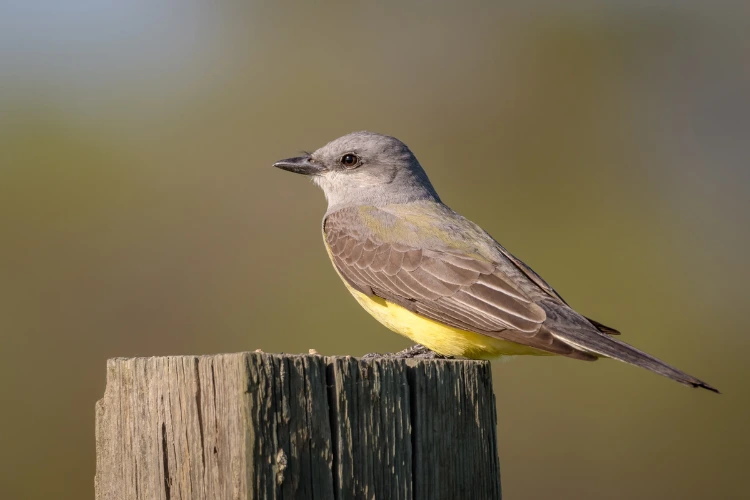
During summer across the length of California, this masculine flycatcher stakes out nesting territories – typically open country with scattered perching trees. Highly territorial, the steely-blue gray-backed male launches from bare branches toward any perceived threat, even humans! His lemon-yellow belly offsets his self-assured aggression.
Azure Adventurers – Rare Vagrants
Beyond established blue denizens and migrants, California’s extensive habitats have attracted some extraordinary winged visitors far from their expected ranges. Birders relish these unlikely sightings of migratory vagrants off-track from traditional destinations. Several gorgeous blue species make rare California appearances!
1. Varied Bunting
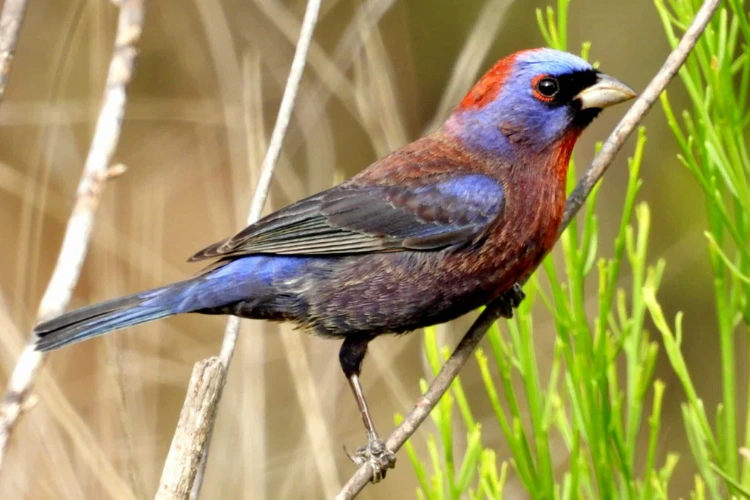
Normally keeping to Mexico and the U.S. Southwest, vibrant blue male breeding plumaged Varied Buntings occasionally disperse farther north. This striking songster belongs to the blue grosbeak and indigo bunting family. Birders cherish sightings attracted by its colorful cerulean head, purple-blue breast, and bright red eye ring.
2. Eastern Bluebird
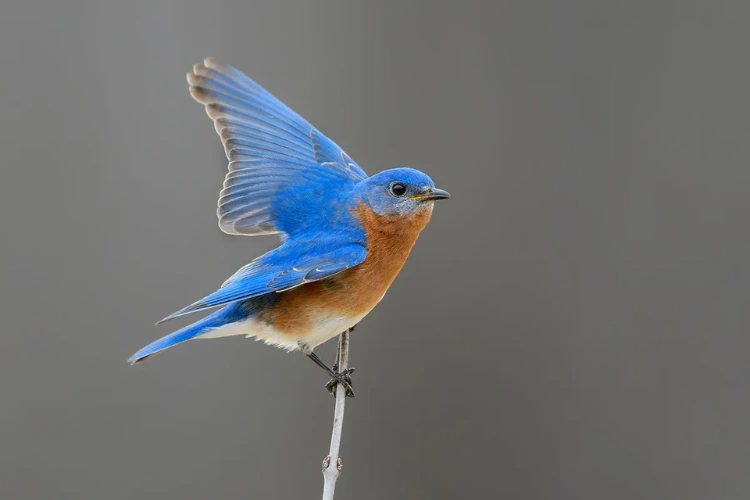
A wayward individual or small flock materializes once in a great while around California’s Central Valley, intriguing birders with the novel west coast arrival of its whole azure family. The interlopers match the Western Bluebird yet lack rusty-colored bellies. Before now, experts regarded Nevada as their established western limits.
3. Magnificent Hummingbird
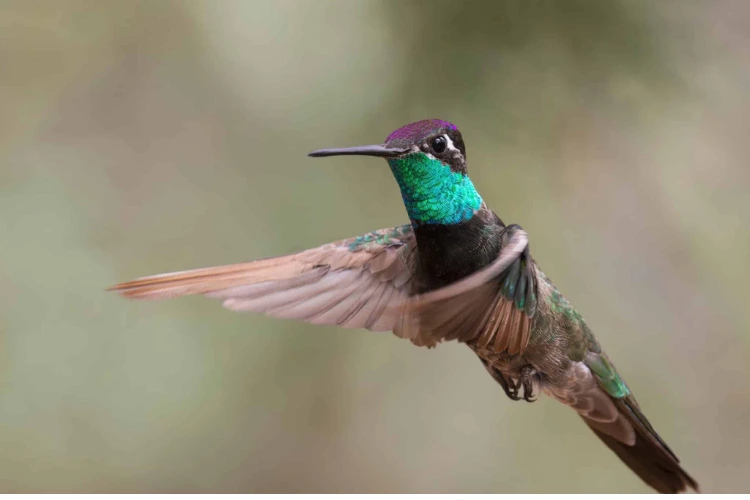
Every few years, this dazzling hummingbird wanders north from Mexico. Named for its showy brilliance, males sport a shiny blue-violet throat and crown alongside burning rufous flanks during breeding displays. One young female reached as far as Alaska, making headlines! California birders have spotted this rare glittering vagrant a handful of times since 1960.
Conservation Concerns for Azure Avians
From familiar jays probing backyard feeders to rare migrants straying off course, blue birds captivate Californian’s across the state. However, changing climate patterns and habitat loss jeopardize vulnerable species. For example, global warming threats pressure the Black-chinned Hummingbird, as models forecast declining food plants and nesting ranges.
Likewise, the Western Bluebird, a species prospering recently in deforested areas and sustained by provided nest boxes, may still experience shrinking suitable territory with climate shifts and increased wildfires. Restoring crucial oak woodlands habitat squeezed by development aids species like the acorn hoarding Western Scrub-Jay.
Better protecting remnant mature forests allows rare chance sightings – a wayward Varied Bunting or lone Eastern Bluebird stopping to rest on a long journey. Promoting more sustainable forestry promotes biodiversity. We must also push for international policies that protect long-distance migrants on their passage across oceans and continents. With diligent environmental stewardship, California’s dazzling blue avians will endure.
Final Thoughts
The azure colors lighting up California’s abundant landscapes result from a diversity of spectacular adaptations – a male Mountain Bluebird signaling to attract a mate, an Anna’s Hummingbird contending with cold to maintain a year-round residence, or a Western Tanager consuming carotenoid-rich insects to produce spectacular breeding plumage.
From irascible jays to virtuoso buntings, all deserve appreciation and conservation support. Through blue birds, we reconnect with nature’s tapestry – they encapsulate whole ecosystems based on ancient oak trees, healthy watersheds, and thriving old-growth forests. By preserving critical habitats that sustain their specialized roles, we invest in vibrant ecosystems benefiting all wildlife while ensuring California’s avian diversity perseveres for perpetuity.

